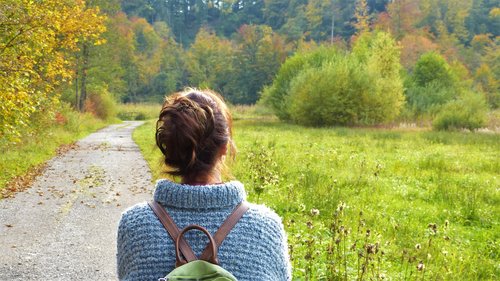I can't recall seeing so many masks in Seattle as I saw over the past month, but it has been two summers in a row now where pollutants posed a serious health risk. In a previous blog for the store, Amanda Moreno asked a poignant question: Is this the new normal?

Perhaps, or perhaps not, but with fall quickly approaching, rather than complain, we can take this as an opportunity to be thankful for some ‘normal’ weather. The rain, as MIT noted, cleanses the air, and without digging deep into the science of forestry, one has to believe that with less rain,
Seattle may have seen some fires of its own, instead of just the ash and smoke from its neighbors. What's critical to realize, however, is that Seattle is just another piece of geography. The metal and concrete that makes up Seattle's skyline contributes to light pollution, smog, noise, and contamination in the Puget Sound. Not to mention the absence of any trees or wildlife that used to live in what is now Seattle's concrete forest. The homes of Seattle didn't escape fire due to pure chance; we escaped fire because Seattle is mostly rain and concrete.
While in the past we have seen ourselves as separate from nature, we can no longer afford to maintain that viewpoint. We would not say that Seattle is separate from Washington, nor would we say that our cars do not exist on this Earth. In this way, we can see that Seattle is part of nature, and Seattle's rain is part of nature, and Seattle's humans are part of nature.
If our city's founders enjoyed harvesting Washington's forests, perhaps now is our chance to return some of that bounty. By using axes and guns, we have become the forest's predator, and while it is only natural that we lived like this in the past, we can now transform that relationship of predator and prey into one of borrowing and returning. In Deep Nature Play, Joseph Cornell writes,
“Just as different parts of the brain communicate with one another, trees communicate and share nutrients with other trees through what scientists call the ‘wood wide web,’ an underground fungal network connecting roots of trees in a forest…. A recent study by forest ecologist Suzanne Simard and her graduate students shows that Douglas fir and paper birch trees shuttle carbon seasonally back and forth to one another. During the shady summer months, the birch trees pass carbon to the sun-starved Douglas fir seedlings. And during autumn—after the deciduous paper birches lose their leaves—the fir seedlings, now receiving more sunlight, send carbon back to the birch trees” (43).
Unfortunately, humanity has not been good at giving back to the Earth. A potential excuse is that up until recently, nature didn't need us to. But now the earth has a need for help; if nature’s gift is raw material and life, the gift of humanity is ingenuity and the ability to consciously adapt. We should not see human ingenuity as only a destructive force; we have created these metal habitats to make homes for ourselves – now the world needs us to create a habitat that can be a home for the world.
Cornell offers us the model of playing a game with nature. “Generally children behave without thinking about their behavior,” he writes. He continues to tell a story about two sisters, “who—like most siblings—sometimes played together, sometimes ignored each other, and sometimes fought with each other. When the sisters decided to play at being sisters, however, they began to dress alike, talk alike, and walk with their arms around each other. Playing sisters caused the girls to reflect on what sisterhood meant to them, on how sisters would behave” (48). Cornell invites us to play with nature, to be conscious and intentional in our relationship.
For the Seattleite, this would perhaps entail reshaping our perception of the landscape. It would be easy to see ourselves as a corruption, a cancer in the woods, but this shouldn't be the end of the story. The eruption of St. Helens was the largest environmental disaster in Seattle’s recent history, in a matter of days destroying what must have taken the greenery ages to grow. And yet, nobody can rightly refer to St. Helens as a cancer, a villain who hid in the white of the clouds only to explode in fire and ash. Exploding was simply the role of St. Helens in this natural game

Humans, too, are part of this game. What we must realize is that nature is not something we can decide to enter. We are in nature and playing a game with nature whether we like it or not. What is up to us is whether we will be conscious of the role we play.
Ethan Barker
